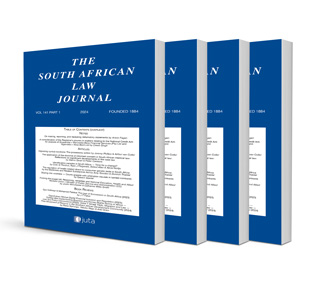What’s in a name? A note on nomenclature

What’s in a name? A note on nomenclature
Author M Wallis
ISSN: 1996-2177
Affiliations: Judge of the Supreme Court of Appeal
Source: South African Law Journal, Volume 137 Issue 1, p. 25-31
Abstract
This note considers the problems relating to the naming of the courts of the various divisions of the High Court of South Africa resulting from the conflict between requirements set out in the Superior Courts Act 10 of 2013 and the Chief Justice’s Directive 3 of 2014 respectively.